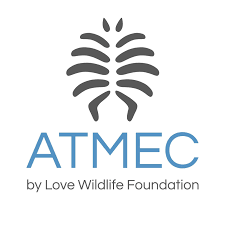Save the Corals
Corals are comprised of a group of identical individual polyps that live with each other in condensed colonies. They construct the reefs in tropical oceans by secreting calcium carbonate which forms a hard skeleton. An individual polyp is usually an animal resembling a sac that has a diameter and length of a few centimeters.
The Problem
There are many factors which contribute to declining trend of many of the coral species worldwide.
First and foremost, aquatic resource exploitation, such as fishing and harvesting aquatic resources for jewelry or ornamental purposes, is one of the primary reasons that is negatively affecting habitats of the coral populations.
Moreover, urbanization, industrialization, tourism, recreational activities, and use of unsustainable UV creams are some of the human affairs that are hindering the growth coral populations and inflicting concerning habitat degradation.
Furthermore, various invasive species or problematic native species are also responsible for the reduction of coral population. For example, lionfish which is native to the Indo-Pacific waters are growing rapidly in the Atlantic Ocean which is surmised to have a significant impact towards the native coral reef ecosystems.
Lastly, many coral species are prone to diseases in the same way as other organisms. This may not have been obvious in the past but is becoming increasingly apparent in the twenty-first century. The ill health is the result of the corals being subjected to increasing amounts of stress as the physical environment in which they live become less suited to their needs.
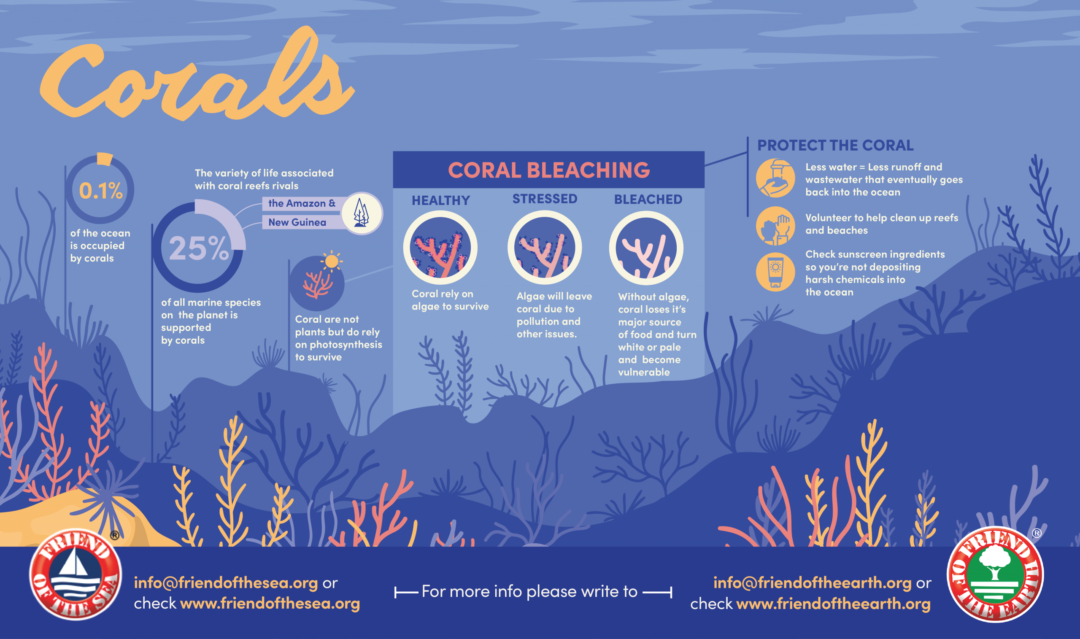
Environmental Consequences
According to IUCN data, approximately 100,000 coral reef and reef-associated species have been described to date, but experts have barely begun to catalogue the total number of species inhabiting the world’s reefs and some estimate that there could be 2 million species or more. There are about 600 species of coral around the world. At present, it is estimated that 20% of the world’s coral reefs have been destroyed. Another 24% are at high risk of collapse, and yet another 26% at risk from long term collapse because of human activities. If the current trend continues, 70% of the world’s coral reefs could be destroyed by 2050.
South and Southeast Asia are home for the highest numbers of these declining species. It is followed by Oceania, East Asia, and Sub-Saharan Africa. West and Central Asia and North America are not lagging much behind.
Of the species that could be assigned conservation status, 33% are in categories with elevated risk of extinction. The most salient threats are induced by coral bleaching and diseases driven by elevated sea surface temperatures, with extinction risk further exacerbated by local-scale anthropogenic disturbances. The proportion of corals threatened with extinction has increased dramatically in recent decades and exceeds that of most terrestrial groups.
The Caribbean has the largest proportion of corals in high extinction risk categories, whereas the Coral Triangle (western Pacific) has the highest
proportion of species in all categories of elevated extinction risk.
Possible Solutions to save the corals
Many actions could be taken to safeguard threatened coral species.
Firstly, site, resource, and habitat protection need to be assured which could be done by implementing marine protected areas. Important management and conservation measures can promote conscious fishing and harvesting of other aquatic resources as well as by establishing eco-friendly marine tourism.
Besides, site management and coral restoration should be at the forefront of strategies to save threatened species. Reduction of sediment flux and coral farming or gardening are key examples in this regard. The Coral Restoration Foundation, a USA based charitable environmental organization have been involved in returning more than 30,000 corals to Carysfort Reef since 2015, in underwater farms in Florida. As a result, it is slowly becoming one of the pristine reef sites along the Florida Reef Tract.
CITES is an international treaty which, as of the Fall of 2002, has over 150 countries as members. The purpose of the treaty is to control the international movement of wild animals, alive or dead, whole or parts there of (“specimens” of species) in such a manner as to be assured that the pressures of international trade do not contribute to the endangerment of the listed species. At present, Antipatharia Black corals, Coralliidae Red and Pink corals are among others that are enlisted in this category and these legislations need to be implemented.
Finally, awareness should be raised to protect the threatened species through employing formal education, training and campaigns, as well as the initiation of novel local and national laws.
WSF Activities and initiatives
The World Sustainability Foundation provides financial support to Love Wildlife Foundation, Thailand (parent organization to the Aow Thai Marine Ecology Center (ATMEC)), a foundation under the laws of the Kingdom of Thailand and based in Thailand. ATMEC is a marine science-focused initiative, aimed at providing education in marine biology and ecology to students of all ages. ATMEC also prioritizes conducting original research, conservation projects, and coral restoration activities, in the Gulf of Thailand.
The following results were obtained in 2022:
1. Purchase of raw materials for construction of artificial reefs.
2. Purchase of prefabricated materials for the construction of artificial reefs.
3. Deployment of a minimum of 3.000 kg of artificial substrate for restoration.
4. In-situ attachment of corals and maintenance of structures.
In 2023, thanks to Omegor‘s invaluable support, it was possible to conduct coral monitoring and protection activities, a crucial step in coral restoration projects.
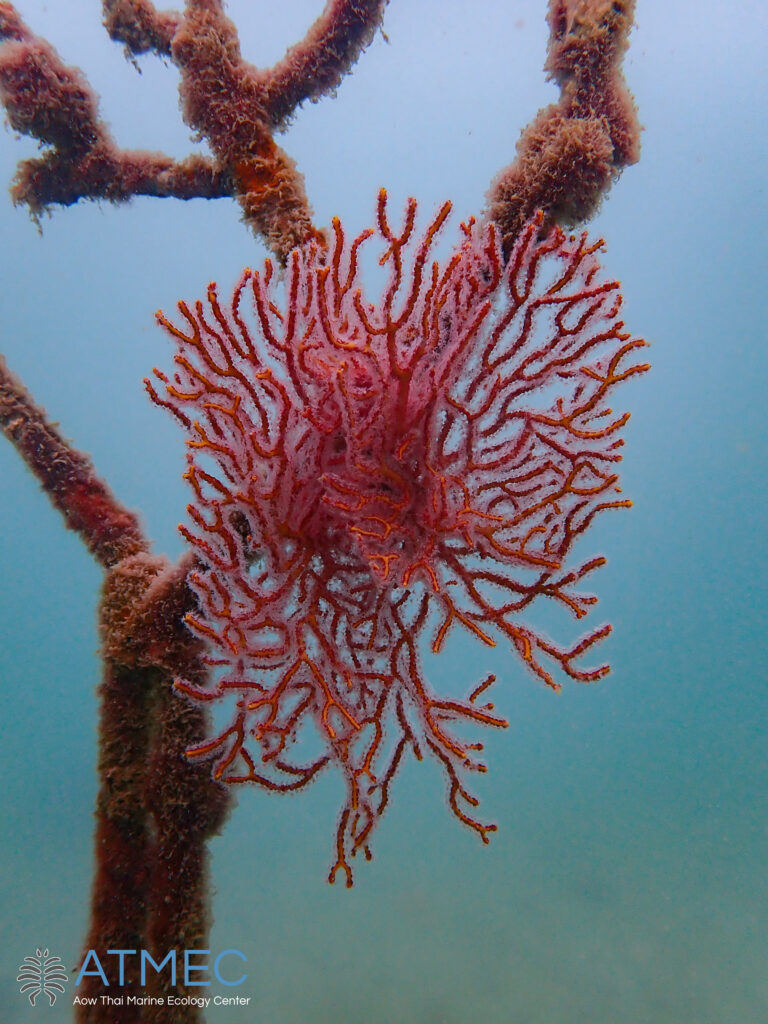
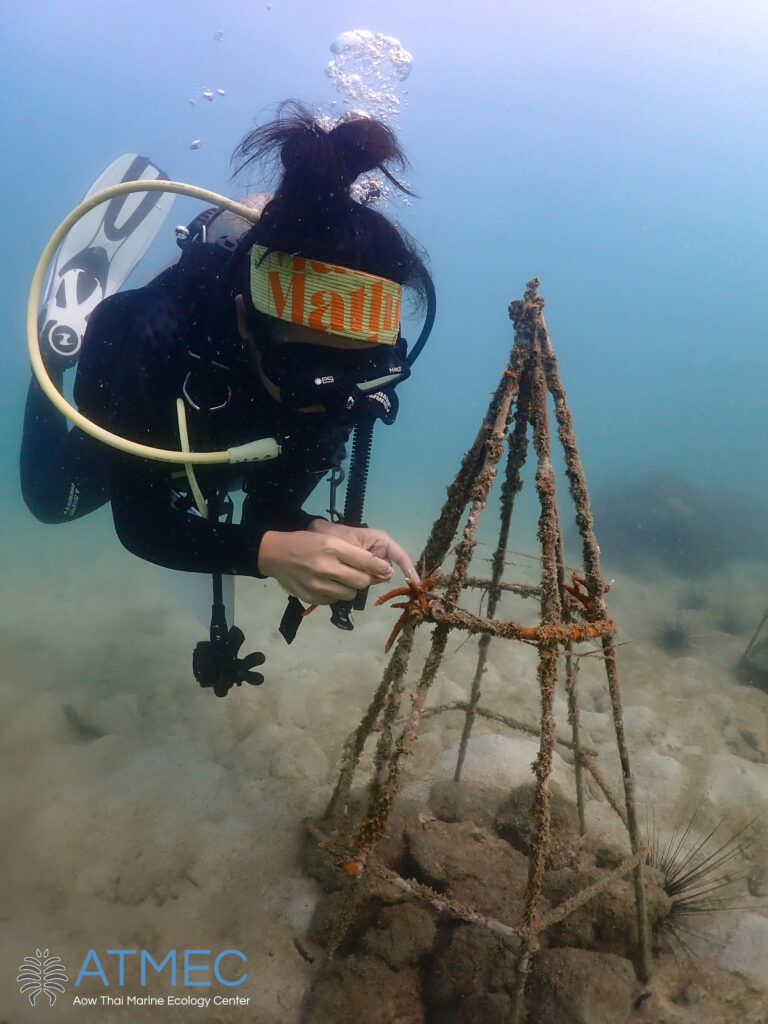
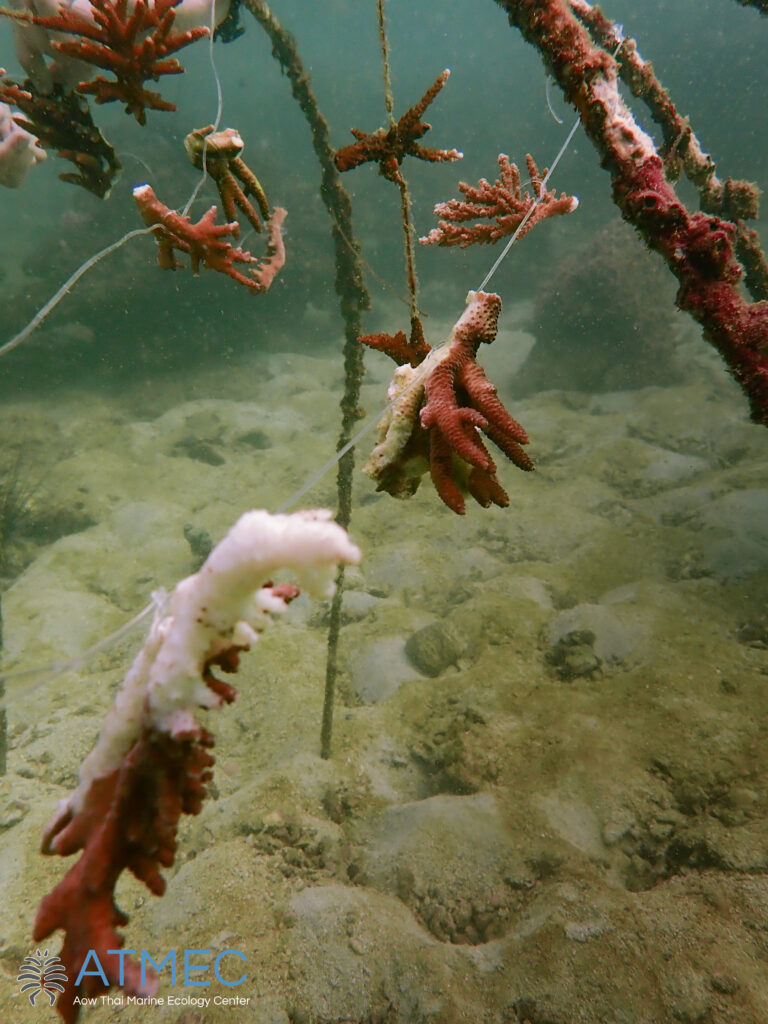
The final results after 12 months of restoration and maintenance are as follows:
– 308 corals rescued with active restoration: 125 corals surviving.
– 3.95 tons of substrates deployed resulting in 601 corals recruiting.
– Total active restoration corals supported by 308 (125 alive).
– Total passive restoration corals supported by WSF = 719 corals.
Read more about the project in this report.





